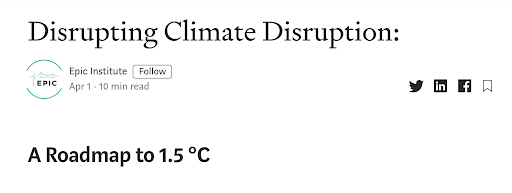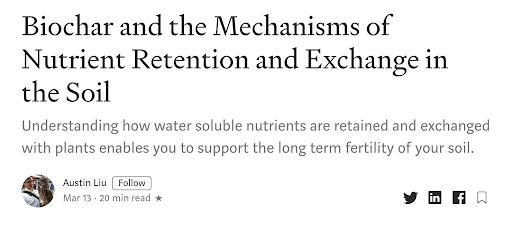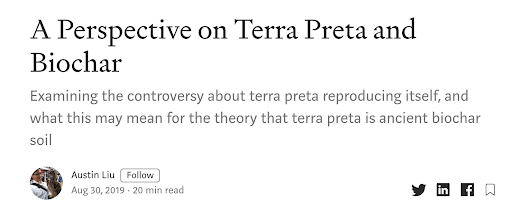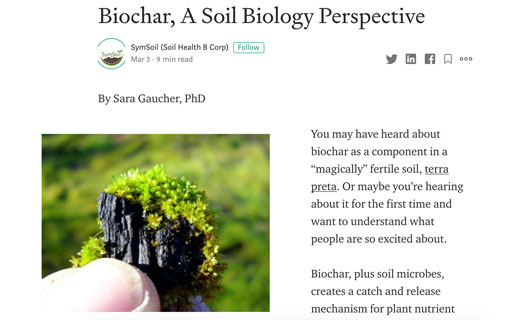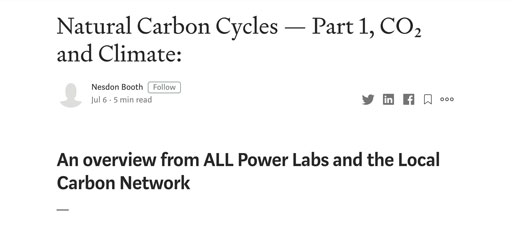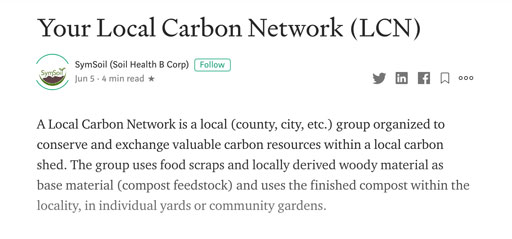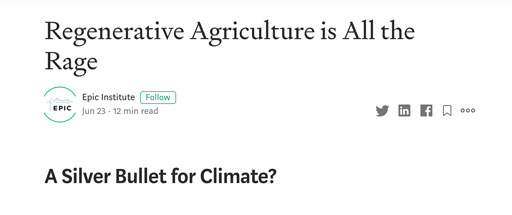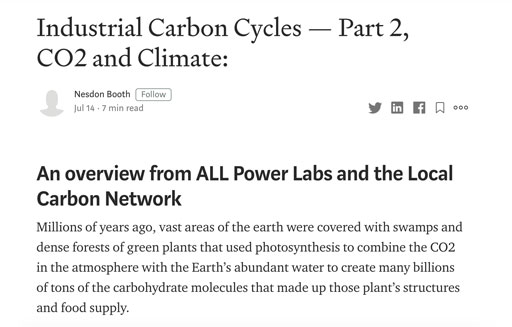Articles
Medium Articles
excerpt: “Day after day we witness the power of the exponent as we watch the curves that tracked the proliferation of the coronavirus. Some cities have seen cases double every 2 weeks — some every 6 days. While the exponential spread of COVID-19 exacerbates the threat it poses, exponential growth can also serve to accelerate positive change. Indeed, the world today is witnessing exponential, market-driven growth of low- and negative-emission technologies and practices that could eliminate and even remove greenhouse gas (GHG) emissions. So how do these factor in the race against climate change?”
– Courtesy of our board member Mr. Tom Dinwoodie –
excerpt: “Please pardon the digression from the previously announced article on the right way and the wrong way to do biomass energy. I wanted to address some background knowledge relevant to soil fertility and biochar that is not as widely known as it ought to be — the mechanism of nutrient retention and exchange in soil.”
excerpt: “In the Amazon Basin, there exists thousands of hectares of cultivated plots consisting of unusually fertile black soil, termed Terra Preta de Indio — “dark earth of the Indians” — called Terra Preta for short. These soils are many hundreds if not thousands of years old, and have remained remarkably fertile in spite of the tropical rainfall, which accelerates the weathering of soil and the leaching of water soluble nutrients.”
excerpt: “Most people compost for Karma points. They want to stop throwing away their kitchen garbage, so they buy compost bins. The composters came with instructions that read,“Things you can include: grass clippings, leaves, kitchen waste, and even old newspapers.”
Following the instructions, people fill compost bins with kitchen garbage, and wait for the food scraps to turn into something wonderful. While they are waiting, and feeling good about themselves, the garbage rots.”
excerpt: “Biochar’s not magic, but it is a tool that’s capable of many functions — a Swiss army knife of soil amendments. Each attachment, used in the right context, can be really useful. And like a Swiss army knife, you’re probably not going to have all the attachments open at once, because that would be, um, kind of awkward. SymSoil focuses on using biochar to improve soil health. Biochar is an integral part of SymSoil’s products, because it’s a great match with the soil microbe biome: biochar brings the chemistry, compost brings the biology, and the soil microbe biome flourishes. The perfect recipe for health soil.”
excerpt: “Carbon is the fourth most abundant element in the universe. It can form more compounds than any other element, leading to more known carbon-containing compounds than all the compounds of the all the other chemical elements combined, save hydrogen which joins carbon in most of them as well. The natural cycle of carbon reactions in the Earth’s geosphere is fundamental to making the earth habitable, with the great range of carbon-containing molecules being extremely active in the long, slow process of the earth’s chemistry, cycling through plate tectonics and weathering over many millions of years.”
excerpt: “Jumping to the conclusion: Climate is far too large a problem for any one single strategy. Regenerative agriculture is an important contributor alongside the other V7 strategies identified above. Given its significant direct benefits to soil health, food, farmers, farm communities, and society, it deserves broad support beyond its climate benefits.“
excerpt: “Carbon is the fourth most abundant element in the universe. It can form more compounds than any other element, leading to more known carbon-containing compounds than all the compounds of the all the other chemical elements combined, save hydrogen which joins carbon in most of them as well. The natural cycle of carbon reactions in the Earth’s geosphere is fundamental to making the earth habitable, with the great range of carbon-containing molecules being extremely active in the long, slow process of the earth’s chemistry, cycling through plate tectonics and weathering over many millions of years.”
Other Articles
excerpt: “If you’ve talked to me in the last three months, you’ve heard me talk about willow. Specifically, willow coppice. I provide a mildly manic monologue, with gesticulation, upon request. But for now, some context on why I’ve been talking about it. The basic concept is this: Sure, trees hold carbon, but I think trees can be a negative emissions technology.“


